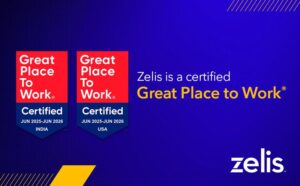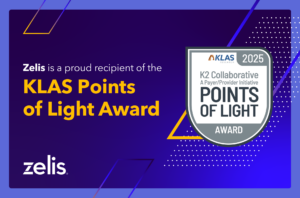
Kaitlin Howard is a researcher and writer producing insightful content across the healthcare revenue cycle. She has written and produced content for Zelis, Waystar, and Recondo Technology, as well as agencies. With a B.A. in English and Writing from University of Denver, Kaitlin stays current on market updates on claims management and healthcare payments, publishing a regular educational blog series on industry trends and Zelis offerings.
Margins are shrinking, providers are frustrated, the talent pool is narrowing, and value-based care models are here to stay. But don’t worry, that pit in your stomach isn’t.
Effective payment integrity is essential to reducing administrative costs and improving relationships with providers, which, in turn, ultimately benefits members. But you already knew that.
The issue isn’t a lack of knowledge. Rather, it’s the use of outdated processes.
Administrative costs account for ⅓ of total healthcare expenditures in the US (aka $4T annually and growing). But the answer isn’t to just cut spending altogether.
A recent review of overall healthcare spending in the US estimated that 25% was due to waste. Numbers-wise that’s somewhere between $760B and $935B. Within that $935B, provider billing and insurance-related activities account for 32% to 52%. And when you take a look at the payer side of things, that number skyrockets to 85%.
The challenge
Virtually every healthcare payer is on a quest to address shrinking margins and streamline claims processing. But many are still using outdated payment integrity processes, making that goal even more difficult to achieve.
And no matter your current approach, the number of advanced technology choices is vast, each one promising “the answer”.
Looking to improve the quality of claims data you receive from providers and intermediaries? There’s a solution for that. Want to smooth out wrinkles in substantiating claims? Ten different vendors have your back. Searching for a way to address interoperability? There’s a vendor (or five) for that. What about data analytics challenges? There are hundreds of vendors looking to catch your eye and gain your business.
Bottom line: As your options expand, so do your chances of finding the right fit for your organization — or the wrong one.
The single-vendor approach
You may be thinking: “Can’t I just pick and choose which solution and vendor works for each challenge?” And you could. Just keep in mind that administrative complexity (e.g., maintaining integrations and multiple vendor touchpoints) may lead to increased spending, proving costly to the provider and member relationships and your bottom line.
Just like many other payers, you’re probably looking to invest in a payment integrity solution that avoids potential issues before paying claims and minimizes disruptions to timely reimbursement. But you should also take into consideration vendors that can provide the best return on investment over time.
Sure, a one-off vendor may “fix” your problem now, but it may end up costing you later down the line. Instead, consider a vendor with a suite of capabilities that can ensure the accuracy of all payments with analytics and intelligence and improve interactions with providers through clear communication and education.
“The conversation needs to start being less about savings to the payer and more about net savings. It’s easy to look at the top line and overlook the impact of a payment integrity vendor’s approach. A payer needs to know from its networks and customer service groups how much noise the approach is causing our system to evaluate that vendor’s full impact.” — Jaret Giesbrecht, Zelis Senior Vice President of Payment Integrity.
The importance of vendor selection
Competition in the payer space is ramping up pressure on health plans and third-party administrators (TPAs) to more closely consider how both pre- and post-payment operations impact future business. Meaning: provider relationships are more important than ever.
“If a provider believes a payer is adding costs, it could negatively impact provider negotiations and open the door to price increases for members. Fighting healthcare costs effectively is impossible when a payer adds cost through inefficient or overly demanding operations.” — Jaret Giesbrecht, Zelis Senior Vice President of Payment Integrity.
Choosing the right payment integrity solution arguably holds the greatest potential impact to your bottom line. A proven payment integrity vendor ensures that all parties (e.g., payer, provider, member) benefit from greater accuracy and transparency.
As you look to evaluate the endless number of potential solutions, ask yourself:
- What are the most important elements of functionality to consider that address both current and future needs?
- Is the goal a single, integrative platform to replace outdated manual and piecemeal tools, or would an assortment of upgraded solutions work better?
- Are you looking for a vendor to offer solutions, or do I want a partner that works with me to optimize and grow business?
- When compared, how do your different options (e.g., payment integrity platforms, self-developed technology, claims editors, fraud tools, third-party services providers) stack up?
“A true payment integrity partner is able to serve as an effective mediator and foster more collaborative relationships between payers and providers that ultimately benefit members. Getting things right the first time builds trust and allows for more productive interactions down the line.” – Bonnie Coburn, Zelis Vice President of Product Claims Editing
But your vendor needs to do more than just encourage relationships. In light of ever-changing policies and continued contractual arrangement variations, payers need to be able to trust that their payment integrity vendor is able to keep pace with changes while meeting the terms and conditions that govern claims and reimbursement.
Only with the right combination of people, process, and technology can you build the foundation you need for both effective payment integrity and meaningful collaboration between payers and providers.
Top payment integrity process considerations
Some of the largest challenges health plans face include new and ever-changing regulations, growing consumer expectations, expanding competition pools, and an increasing adoption of value-based payment strategies. That being said, payers must still ensure they are managing costs and driving operational efficiencies.
In other words, vendor selection is vital.
When evaluating different payment integrity options, functionality within your current workflows and solutions should be the top consideration.
Despite the chaos and challenges posed to health plans today, growth is possible, but you must first take a look at your outdated systems.
To see how Zelis helps your organization harness data-driven insights and human expertise in a connected platform to bridge the gaps in healthcare financial processes, connect with us.




